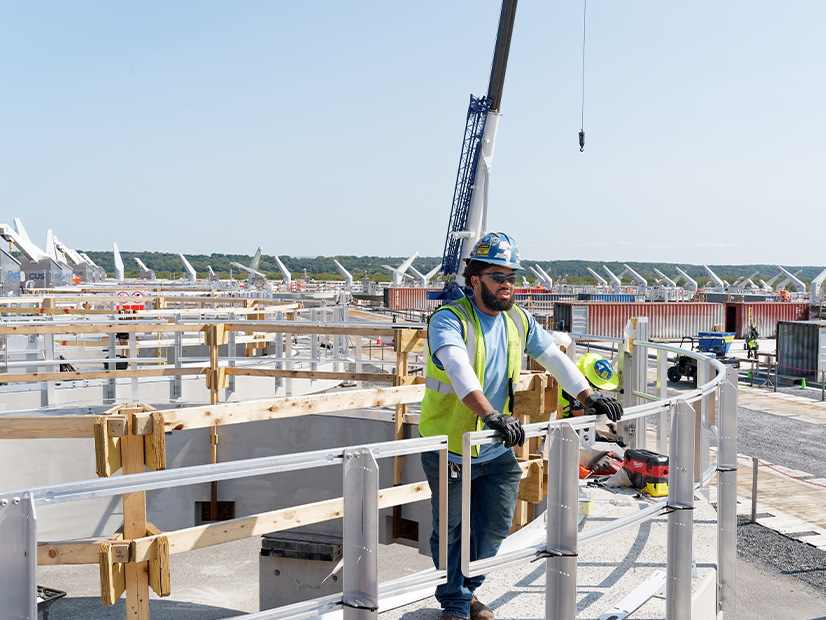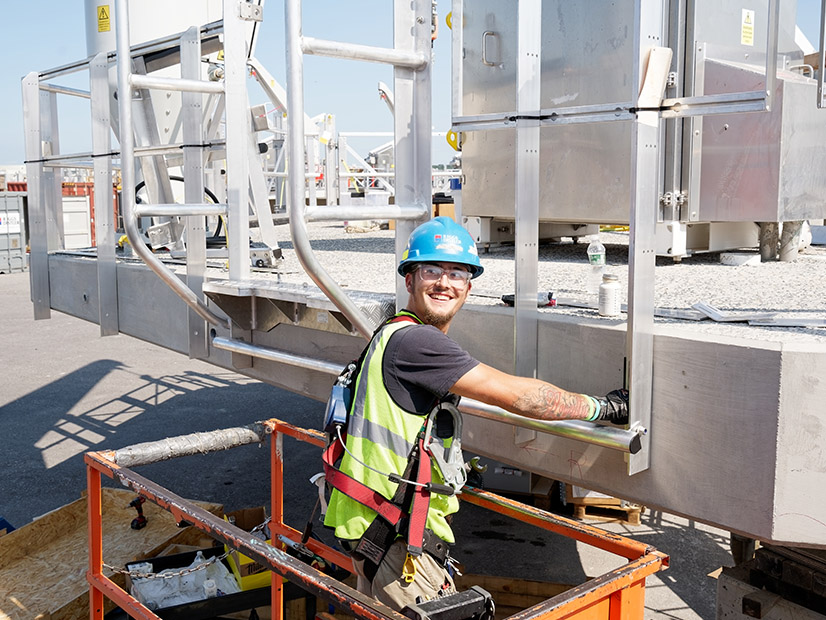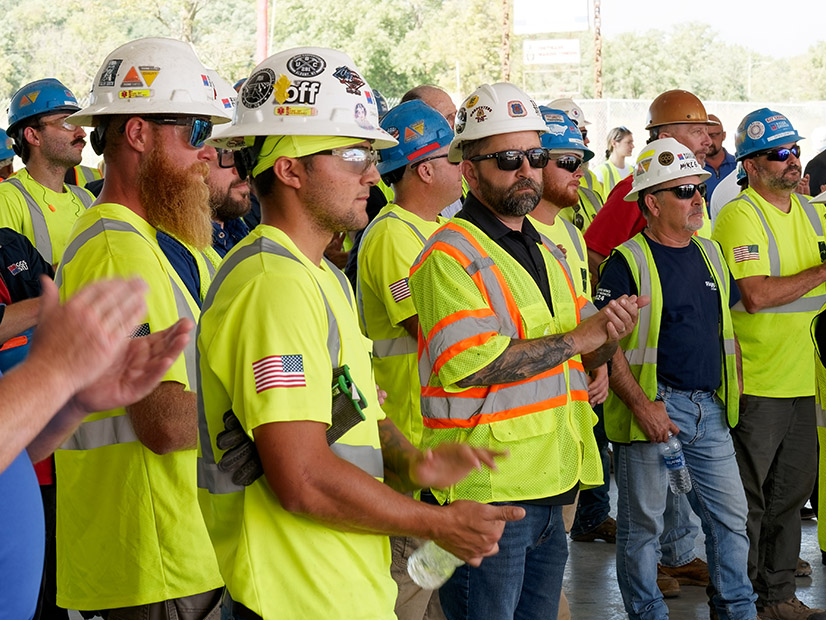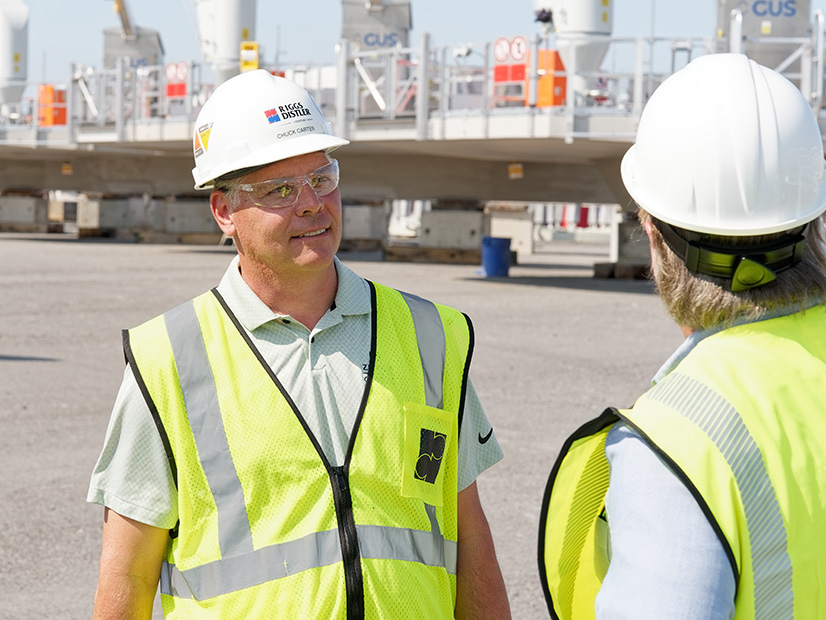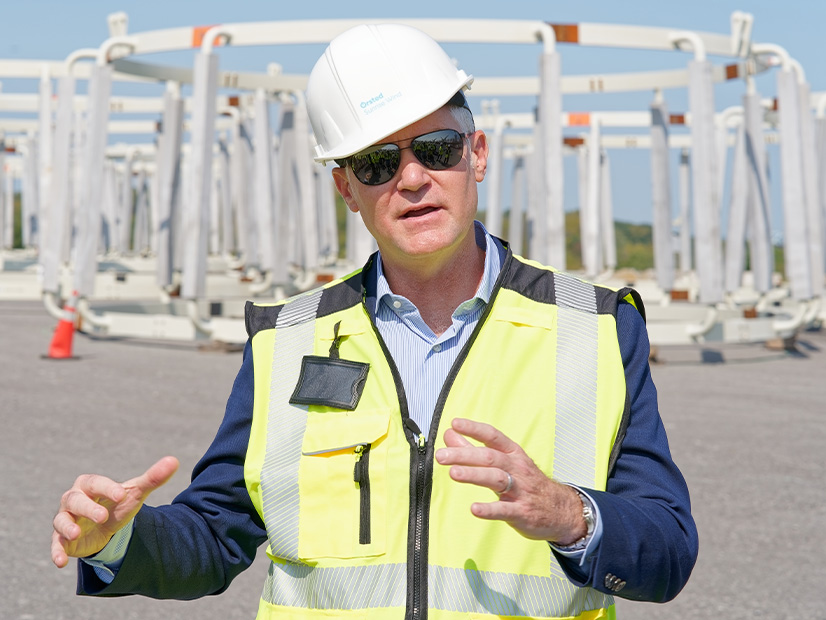
COEYMANS, N.Y. — Major components of New York’s next offshore wind farm are taking shape on a hillside far from the ocean, and along with them the makings of a domestic supply chain.
On Sept. 12, Ørsted gathered industry, labor and environmental officials in upstate New York to mark some milestones in preparation for construction of Sunrise Wind.
The offshore wind developer said it has completed 50% of the advanced foundation components, 50% of the onshore substation and 30% of the duct bank work for the onshore power line.
Horizontal directional drilling will begin for the near-shore cable this autumn, and foundations for the 84 turbines will start to be installed in the spring.
The growing pains early U.S. offshore wind projects have suffered are due in part to the limitations of the domestic supply chain, and the industry’s future will benefit from the experience being gained in places like Coeymans.
“I was here in October of 2021, and we walked around and what we saw was a blank, ungraded piece of land along the river, and we weren’t sure what could become of this site,” David Hardy, CEO of Ørsted Americas, said at the event.
Three years later, contractor Riggs Distler has more than 100 people working on the site and thousands of tons of their handiwork is lined up, ready for shipment.
Chris Johnston, vice president of offshore wind at Riggs Distler, said institutional knowledge is being built as the first wind farms are being built.
“They’re difficult projects. They haven’t been done in the U.S. before. And you know, we’re all learning as we go on some of these projects.”
Even things as simple as the tent placed over concrete as it cures have been improved, construction manager Chuck Carter said. During work in Rhode Island on Ørsted’s South Fork and Revolution projects, the company had to move the tent with a crane. Here in New York, it built the tent on rollers.
“It’s done really well from our challenges in Rhode Island,” he said.
Dozens of 130-ton external working platforms are lined up, two hoists on top of each. One hoist is for materials, and one is for technicians.
The latter is called the GUS crane.
That’s not the manufacturer’s name. It’s a descriptive acronym: Get. Up. Safely.
No more hopping and scrambling to get into the tower.
“Guys or gals would have to jump across to the ladder and climb up, and then get to the platform, and then go inside and go to the top to do the work,” Hardy explained.
With GUS, they can get hoisted right off the deck of the crew transfer vessel.
The Supply Chain
So why do this work in Coeymans?
It is 135 miles of sailing to get to the closest part of the Atlantic Ocean, then 150 more to get to the lease area where Ørsted will build Sunrise.
Answer: Land is plentiful and affordable in Coeymans, and anything from a barge to an oceangoing ship can pull right up to the quay.
In a nice bit of turnaround, the Port of Coeymans sits on the former site of the last working brickyard out of the scores that once lined the Hudson River. So one of the places that manufactured pieces of New York’s urban landscape in the 1800s and 1900s is now building pieces of its energy portfolio in the 2000s.
“Folks, I’m here to say this is what building offshore wind looks like,” said Doreen Harris, president of the New York State Energy Research and Development Authority. “This is what we knew could be possible, and now we see it before us, literally, here today.”
Hardy said Ørsted’s planned investment in U.S. renewable energy is in the $20 billion range, and said the work done in Coeymans will cost $86 million.
New York’s interest in offshore wind is many-faceted, but economic stimulation is near the top of the list.
Harris said: “Of course, we see the major components, the blades, the towers and nacelles, but within that are literally thousands of subcomponents that come with, in this case, hundreds of jobs. It’s a huge value proposition.”
New York had obtained tentative commitments for blade, tower and nacelle factories to be built along the Hudson River in or near Coeymans, but those were contingent on awards in its third offshore wind solicitation, which had to be canceled for lack of specified turbines.
The state still has $500 million available to incentivize supply chain developments, Harris said, and new proposals may be in the offing.
“This is an industry, if we have learned anything, it requires determination, fortitude and commitment, and that is very much what you see here from the state of New York and from the Hochul administration,” she said.
The state has been trying to steer offshore wind job creation toward organized labor — many of the workers building pieces of Sunrise Wind in Coeymans are unionized.
Michael Lyons, president of the Greater Capital Region Building and Construction Trades Council, is happy about this. Beyond the metrics with which offshore wind is measured — billions of dollars spent, gigawatt hours of electricity generated, millions of tons of carbon dioxide not emitted — it can be evaluated for its impact on working people.
“When we talk about hundreds of union jobs Sunrise Wind is creating, that’s not just a number, that’s hundreds of New Yorkers who are excited to be a part of this historic project,” Lyons said. “And that’s why we’re all here today, not just to celebrate the incredible tradesmen and women building our clean energy future, but also to reiterate our commitment to growing this important local industry.”
South Fork Wind, the nation’s first utility-scale offshore wind project, was completed earlier this year and is feeding into the New York grid.
Sunrise Wind is back under contract and under construction after concluding in 2023 that it could not go forward under the financial terms of an earlier contract.
Empire Wind is also back under contract and laying groundwork for construction. It is presently building an $861 million offshore wind hub in Brooklyn, 130 miles closer to the ocean than Coeymans.
At least three projects have been bid into New York’s latest solicitation; the state hopes to award contracts in early 2025.
